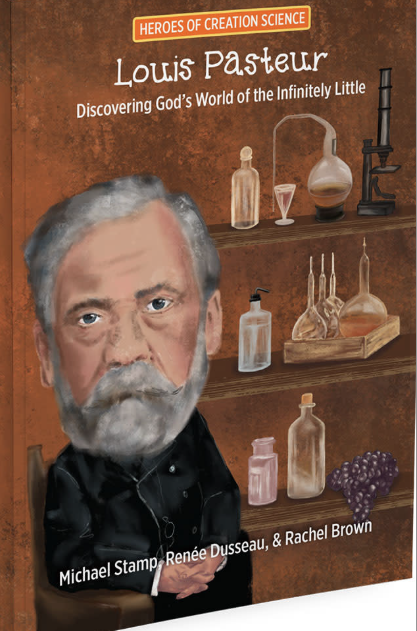The experiment with fruit flies was basically uncomplicated. Any university student could have carried it out providing they could identify and count the various mutant forms. But there was more to the issue than mere counts of fruit fly offspring. The study was supposed to, and had long been considered that it in fact did, support a key idea of Charles Darwin. More than sixty years had passed since the fruit fly work was published. Subsequent to publication in the new journal Heredity in 1948, few people paid much attention to the study until it was quoted favourably in 1972 and 1994 as supporting Darwin’s idea of sexual selection. Those references conferred celebrity status on the work and many citations followed. But then in 2012 a study was published which questioned not only the 1948 work, but also a major component of Darwin’s theory of evolution. However the reasons and issues surrounding the new study are not what we might hope or expect. It is important to remember that scientists draw conclusions in keeping with their world view and there is more diversity in world views in science than one might imagine.
Our story begins in 1871 when Charles Darwin published his book The Descent of Man and Selection in Relation to Sex. In this volume, Darwin proposed and defended the idea that mankind is descended from animal ancestors. Most of this book however was devoted to the idea that a major driver of evolution was in fact “sexual selection.” He argued that the behaviour patterns of males and females can be described in nearly universal terms. The males are driven to mate as often as possible with as many females as possible. The females for their part, seek to be selective concerning their mates. As a result, the more fit (attractive) males leave far more offspring than inferior males and the result is that quality of the next generation is improved over the previous one.
Nobody thought to investigate Darwin’s thesis about sexual selection until 1948 when English geneticist Angus John Bateman (1919-1996) published a simple fruit fly study. Bateman was based at the John Innes Centre in Norwich (England), an independent research institute founded in 1910. The first director was William Bateson. This giant in the field of genetics, actually coined the term “genetics.” Bateson founded the Journal of Genetics but it was later hijacked by another famous member of staff, J. B. S. Haldane who turned Communist and retreated to India.
Yet another famous staff scientist, Cyril Darlington, founded the journal Heredity in 1947. Darlington was a vigorous proponent of classical social Darwinism including the ideas that only the best people should be allowed to reproduce (eugenics), that some races are more fit than others, and that races should not interbreed. It was in the new publication Heredity that Angus Bateman published his fruit fly research. One might well wonder what implications a study on fruit flies would have for anything other than fruit flies. Darwin however had claimed that sex selection was nearly universal and a major driver of evolution. Thus Bateman’s conclusions were considered to confirm Darwin’s views for all animals and people.
From his study, Bateman concluded that he had confirmed Darwin’s thesis that more male mating events led to more offspring. His paper did not attract much attention for many years. For a start, most scientists considered that the ideas were uncontroversial. However suddenly after 1972, Bateman’s work came to be considered a foundational paper in sexual selection, second only to Darwin’s 1871 tome. Bateman’s work has increasingly come to be cited as providing empirical support for Darwin’s views on male promiscuity and female passivity. But nobody thought to critically review Bateman’s research, until now.
Anyone familiar with fruit fly breeding would realize that the study, as designed, would not work. Patricia Gowaty of University of California at Los Angeles (UCLA) recently undertook to actually repeat Dr. Bateman’s study, more than 60 years after its publication. She found multiple problems with the experimental design and analysis. (Proceedings of the National Academy of Sciences June 11/2012 online edition). A problem with missing offspring and other statistical problems, led Patricia Gowaty to conclude that Bateman’s study should never have been published and it most certainly should never have achieved iconic status.
There is a larger question here however. Why would anyone think that a study of fruit fly breeding (however flawed) had implications for any group other than fruit flies? Why for example would fruit fly breeding tell us anything about how humans breed or should breed? The reason, of course, is that Darwin claimed that promiscuous males were a universal principle of evolution. Despite this claim by Darwin however, there have in recent years, been quite a number of challenges to his theory.
Joan Roughgarden, organizer of a conference in 2003 to reconsider Darwin’s views, herself wrote a book entitled Evolution’s Rainbow in 2004 which calls for the outright abandonment of Darwin’s sexual selection theory. In keeping with her world view, Dr. Roughgarden wants to see changes in emphasis made to conventional biology, psychology, medicine and anthropology. In February 2006, in response to an article by Joan Roughgarden in Science, 40 biologists contributed 10 letters to the journal protesting her personal agenda on issues of gender. Five years later however, Science saluted Joan Roughgarden as an audacious scientist who asks bold questions and is committed to following the evidence in search of answers.
So what does it mean when these scientists declare that Darwin was wrong? Does this really mean that Darwin was wrong? Yes he was wrong, but we do not need these ladies, with their controversial agendas, to tell us that. There are countless examples of animals with breeding patterns entirely different from the aggressive males, lauded by Darwin. Also of course, the Bateman study suffered from many obvious flaws and it should never have been considered applicable to anything other than fruit flies in any case. The issue that caused Patricia Gowaty and Joan Roughgarden to challenge Darwin, was their feminism. They were challenging Darwin’s view of male superiority, not evolution. It just goes to show that one’s worldview affects how one interprets science and how the world reacts to that science. It is entirely possible to be right for the wrong reasons, as this study shows. Obviously it is important to be critical consumers of scientific information.
Moxie
October 2012
Subscribe to Dialogue






